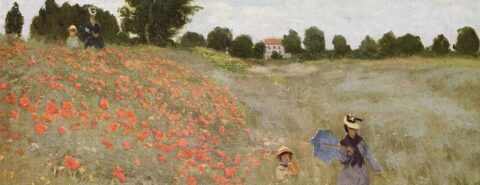 Translating Proust again There is no ideal, ultimate translation of a given original. Classic texts in particular, from Homer onwards, are susceptible of multiple readings and retranslations over time. Retranslation of classic works, and the ability to compare different versions of a given text, afford an opportunity to celebrate not only the expressive capacities of the English language and the creativity of the translator’s art, but also the inexhaustible richness of the translated text. For half a century, the translation of Marcel Proust’s A la recherche du temps perdu by Scott Moncrieff, published between 1922 and 1932, was the only one available to English-speaking readers unable to read Proust in the original French. This translation was monumental in its scale and in many ways admirable in its realization. Moncrieff had a fine ear for the cadences of Proust’s prose, and a considerable talent for elegant phrasing. But his language dated over time, especially in dialogue, and from the beginning he was prone to tamper with the text, through embellishment or the heightening of language. The reservation most commonly voiced about his translation, indeed, is that it changed Proust’s tone. He tended to make Proust sound precious and flowery, whereas Proust’s style is not in the least affected or ornate. His prose is precise, rigorous, exact. Grand rhythm and maxim-like concentration often work together. Proust’s sentences, though elaborately constructed, have a beautiful balance, a musicality that becomes particularly apparent when the text is read aloud. Terence Kilmartin, in his 1981 revision of Moncrieff, made numerous small changes, making his predecessor’s prose a little plainer, though his edition (itself revised by D.J. Enright in 1992) remains essentially Moncrieff’s. As John Sturrock observed, Moncrieff’s choice of title, the Shakespearean Remembrance of Things Past, hardly reflects the plainness (or the thematic implications) of A la recherche du temps perdu. The choice is symptomatic, Sturrock noted, of “the unhappy way in which Scott Moncrieff contrived to play down the stringent intelligence of his author by conveying it in an English prose that is constantly looking to prettify. It’s as if the translator had been taken aback by how acrid and how ruthless Proust can be in his exposure of the deep falsities of the inhabitants of the Parisian beau monde, and was determined to muffle its cruelty by the gentility of his English.” New translations of classic authors are produced to some extent in the shadow of their predecessors, of which they offer, implicitly or not, a kind of critique. This is very much the case with Lydia Davis, who translated the first volume of the novel, Du côté de chez Swann (as The Way by Swann’s), for the 2002 Penguin edition of the Recherche. Her translation is marked by a determination to stay close to Proust’s original in every way, including the retention of the precise order of elements in a sentence. In stark contrast to Davis is James Grieve’s 1982 translation (republished in 2023 by New York Review Books). This translation is very free. Grieve is more than ready to reshape the Proustian sentence, and to use colloquialisms, in pursuit of what he called “real English.” “New translations of classic authors are produced to some extent in the shadow of their predecessors, of which they offer, implicitly or not, a kind of critique.”
I think of translation as an art of imitation: a quest to reproduce a text’s “voice.” It is a kind of performance art, combining close reading and creative (re)writing. This involves a multiplicity of exact choices concerning rhythm, register, sound, syntax, tone, texture: all those things that make up style and reflect the marriage between style and meaning. Proust’s style is largely identified with his famous long sentences, with, in Richard Howard’s words, their “coiling elaboration.” As they uncoil, the sentences express the rhythms of a sensibility, the directions and indirections of desire, the conflicts and convolutions of a mind that forms the framework—indeed the subject-matter—of the narrative as it unfolds, via many detours and with a dynamic backward- and forward-looking movement, from childhood beginnings to mature adulthood. The narrative builds multiple perspectives into a symphonic structure, promoting a dramatic narration as the narrator comes slowly to understand the significance of his past life. The Proustian sentence reflects the narrator’s exploration of his experience, presenting things as he sees them and reflects upon them. It is crucial to maintain the overall integrity of Proust’s syntax, in order to maintain the rhythms of the narrator’s representation of his experience. Since Moncrieff’s day, literary translation has become a much more self-conscious practice, while recent years have seen the rise of the academic discipline of translation studies. Some academics champion a “foreignizing” approach to translation. This denotes, in its milder form, a determination to stay as close as possible to the original, and, in its most zealous form, a kind of interventionism that heightens one’s awareness of the foreign. The latter approach implies the production of a consciously defamiliarized English by the retention of syntactical or grammatical conventions from the source language: to make the translation “feel French” (or German, etc.) and remind readers that they are reading a translation. Proponents of this approach feel it shows respect for the other and has the merit of sensitizing readers to diversity among cultures. There is of course a foreignness inherent in the text, both for linguistic reasons and because different languages reflect different social and cultural worlds. Who would not wish to respect foreignness in the latter sense—for instance, by keeping culturally specific words and phrases in the original? But foreignize stylistically? Proust sounded strange in French, to his French audience, because of the particularity of his voice, a strikingly original new voice given shape in his native language. It is a verbal strangeness—a stylistic otherness—the translator must aim to reproduce so that the Anglophone reader can experience something equivalent to the experience of the native French reader. But this is not the same as trying to make the translation sound French per se. Successful translation of Proust is achieved (unsurprisingly, one might feel) by making him sound like Proust—by giving him an English voice, a voice that conveys his vision, his sensibility, his unique qualities as a writer. Moreover, as I hope my translation shows, Proust in English can be idiosyncratic while retaining an idiomatic quality. My goal has been to recreate Proust’s voice in such a way that the translation creates the illusion that the reader is reading not a translation but the original. Featured image: “Coquelicots (La promenade)” by Claude Monet via Wikimedia Commons (public domain) OUPblog - Academic insights for the thinking world. 
 Five children’s classics that stand the test of time [reading list] The books people remember most are often the ones from their childhoods, and it’s no surprise; many children’s books have survived decades of changing tastes and digital distractions, continuing to entertain generations of children and even adult readers. Here are our top five picks for the young and young at heart! 1. The Adventures of Pinocchio by Carlo CollodiTranslated with introduction and notes by Ann Lawson Lucas Did you know the story of Pinocchio comes from Italy? Carlo Collodi’s tale of the wooden puppet who wants to be a “real boy” has thrived beyond the borders of its native land. This fantasy had been widely translated and adapted many times—in 2022 alone there were three Pinocchio films! With a strong moral message and plenty of quirky characters, The Adventures of Pinocchio is a novel you won’t soon forget. Read: The Adventures of Pinocchio 2. Treasure Island by Robert Louis StevensonEdited by Peter Hunt After being entrusted with a treasure map and warned to beware “a one-legged seafaring man,” young Jim Hawkins goes on a swashbuckling, high-seas adventure. There may be a one-legged man cooking meals below deck, but he doesn’t seem too bad… Treasure Island may have founded the “boy’s story” genre, but its moral complexity and gripping plot appeals to children and adults alike. Read: Treasure Island 3. The Wonderful Wizard of Oz by L. Frank BaumEdited with an introduction by Susan Wolstenholme and with the original illustrations by W. W. Denslow The film and musical might be better known, but neither would exist without this 1900 novel. The first in L. Frank Baum’s Oz series, The Wonderful Wizard of Oz follows Dorothy Gale in a magical land where wild beasts talk, silver shoes have magic powers, and good witches offer protection with a kiss. It’s a surreal adventure with the important message of appreciating what you had all along. Read: The Wonderful Wizard of Oz 4. Black Beauty by Anna SewellEdited by Adrienne E. Gavin It might seem strange to find a horse’s autobiography on this list, but Anna Sewell’s 1877 novel is one of the bestselling children’s books in English. Join Black Beauty as he grows from colt to stallion, experiencing a range of kind and cruel owners. Anna Sewell may have originally written this book to expose animal cruelty to Victorian adults, but Black Beauty’s story has found its way into children’s hearts then and since. Read: Black Beauty The Water Babies by Charles KingsleyEdited by Brian Alderson and Robert Douglas-Fairhurst This might be one of the darkest children’s classics ever written. Forced to work as a chimneysweep, Tom later drowns in a tragic accident. After death he becomes a “water-baby” and is sent to help others across the world. Tom’s encounters with the animals of the river introduced children to the joys of nature and the new theory of Darwinism. Its message of redemption has given readers hope over many generations. Read: The Water Babies If you’ve enjoyed our recommendations, why not check out our full list of classic children’s titles on Bookshop? Featured image by Aaron Burden on Unsplash.com (public domain) OUPblog - Academic insights for the thinking world. 
 Xenophon’s kinder Socrates “Of Socrates we have nothing genuine but in the Memorabilia of Xenophon,” Thomas Jefferson wrote to a friend in 1819, comparing Xenophon’s work favourably with the “mysticisms” and “whimsies” of Plato’s dialogues. More recently, many philosophers have taken the opposite view; a typical verdict is that of Terence Irwin in 1974, who described Xenophon as a “retired general” who presented “ordinary conversations.” The idea that Xenophon’s Socratic dialogues entirely lacked the philosophical bite or intellectual depth of Plato’s had become a commonplace in a philosophical discourse which prioritised abstract knowledge over broader ethics. Both Jefferson and Irwin were right in identifying the characteristics of Xenophon’s depiction of his teacher—his overwhelming concern with providing practical advice for living a good life, and for managing relationships with family and friends. But both missed Xenophon’s lively wit, and his use of the dialogue form to put Socrates in conversation with Athenians, both friends and family and more public figures whose identity adds some spice to the discussion. Xenophon depicts a Socrates who offers pragmatic solutions to the difficulties his Athenian friends face, from Socrates’ own son’s rows with his mother to his friend Crito’s difficulties with vexatious lawsuits targeting his wealth. Where Plato shows Socrates leaving his conversation partners numbed and distressed by their recognition of their ignorance, as if attacked by a stingray, Xenophon takes more care to show how Socrates moved friends and students on from the discomfort of that initial learning moment. He offers practical solutions and friendly encouragement, whether persuading warring brothers to support each other or finding a way in which a friend can support the extended family taking refuge in his home. His advice is underpinned by an ethical commitment to creating and maintaining community. It is not that Xenophon’s Socrates is afraid to show the over-confident the limits of their capabilities; while he offers encouragement and practical advice on personal and business matters, he rebukes those who want power and prestige without first doing their homework. His Socrates demonstrates to the young Glaucon that he needs to be much better informed about the facts and figures of Athenian civic and military resources before he proposes policy to his fellow citizens in Athens or seeks elected office. Socrates’ forensic uncovering of the young man’s ignorance of practical matters is sharpened for readers who recognise that this is Plato’s brother, depicted in his Republic as an acute interlocutor, able to follow Socrates’ most intellectually demanding arguments. In the conversation Xenophon presents, Glaucon is reduced to mumbling one excuse after another: “Then first tell us,” said Socrates, “what the city’s land and naval forces are, and then those of our enemies.” “Frankly,” he said, “I couldn’t tell you that just off the top of my head.” “Well, if you have some notes of it, please fetch them,” said Socrates. “I would be really glad to hear what they say.” “Frankly,” he said, “I haven’t yet made any notes either.” (Memorabilia 3.6.9)
Xenophon might be making a very ordinary claim here, that good leadership decision-making rests on a firm grasp of practical detail. But it gains depth when read against Plato’s argument in the Republic for handing over political leadership to philosopher kings, trained in theoretical disciplines. Xenophon argues that rule should be grounded from the bottom up; he is a firm believer in transferable skills, and that the ability to manage a household might equip someone to lead an army or their city. Xenophon does not leave Glaucon quite as discomfited as Socrates’ interlocutors in Platonic dialogues become, such as the Euthyphro where the titular character hurries away rather than go through another round of being disabused of his opinions. He shows how Socrates moves on from the low point of the realisation of ignorance and starts to rebuild his interlocutors’ self-confidence, now underpinned by knowledge and self-awareness. Socrates offers Glaucon a careful recommendation for developing his management skills and gaining credibility before returning to public debates as a more impressive contributor. With another student, Euthydemus, Socrates switches from the argumentative mode familiar from Plato’s work—the Socratic “elenchus” or refutation—to exhortation and encouragement, as teacher and student become more familiar with each other and learn together cooperatively. “Responding to Plato’s dialogues with a less intellectualist account of the capacities that leaders need, Xenophon made a case for the importance of leadership skills and knowledge as the basis of public trust.”
One reason that Xenophon was motivated to show a Socrates who encouraged his students to make useful contributions to public life was to rebut critics who presented him—not entirely without cause—as the teacher of some of the leaders of the brutal regime of the Thirty, which briefly overthrew Athens’ democracy after the end of the Peloponnesian War. Xenophon insists that these former students had abandoned Socrates’ teaching in favour of an aggressive pursuit of power. Xenophon recognised the usefulness of a wide range of practical experience. A businessman might well make a useful general. But he makes Socrates insist that leaders must show practical knowledge and analytical skills in order to persuade others to follow them and to deliver successful outcomes, whether in business or in battle. The combination of knowledge and skill, which his students label basilikē technē, the “royal art”,” is an essential attribute of leadership. By responding to Plato’s dialogues with a less intellectualist account of the capacities that leaders need, Xenophon made a case for the importance of leadership skills and knowledge as the basis of public trust. In a contemporary context where trust in leaders and educators alike is low, perhaps there is a powerful and accessible case for the role of expertise in government and society, which Xenophon makes through his memories of Socrates’ conversations. Featured image: “The Death of Socrates” by Jacques-Louis David via The Met (public domain) OUPblog - Academic insights for the thinking world. 
 After Burns: recovering Scottish poetry Scottish poetry produced in the long eighteenth century might strike you as at once familiar and unknown. Familiar because it includes among its ranks one of the world’s most iconic bards, Robert Burns, as well as one of the most influential novelists of all time, Sir Walter Scott. Unknown because Burns and Scott still overshadow their peers, some of whom have been out of print for decades, even centuries. Struggling to make an impact on the cultural scene of their age, for a variety of personal and social reasons, some of these poets and songwriters published only a single and often small selection of works. A lot of the pieces even appeared posthumously, for the first time, years after the writers’ deaths. Some who were successful at the time, whether critically or commercially, have long fallen out of public view. A younger contemporary of Scott, Thomas Campbell has largely been sidelined, even though he once enjoyed great prestige across continental Europe—statues and clubs were raised in his honour. Largely forgotten, the Falconar sisters produced two joint collections of highly sophisticated poems when they were barely teenagers. What became of them after 1791 remains a tantalising mystery. A hugely popular weaver poet, Robert Tannahill had a stylistic range that far extended beyond the admittedly unmissable influence of that ingenious fellow labouring poet, Burns. At the other end of the class spectrum, Lady Bury had her own thoughtful songs that will long stay with you (“On Seeing Some Withered Roses Thrown Away”: “Wipe off the yet impassion’d tear, / And turn my heart to peace”). Poets from all walks of life honoured their entire nation (under the labels of “Scotland”, “Scotia”, or “Caledonia”); others focused on local communities, whether it’s Lord Byron’s Aberdeenshire, Alexander Douglas’s Fife, Robert Fergusson’s Edinburgh (“Auld Reekie”), Richard Gall’s Ayrshire, Alexander Geddes’s Linton, John Mayne’s Glasgow, David Vedder’s Orkney, or Margaretta Wedderburn’s Dalkeith. Universal literary and real-world themes sustained their attention, just as they sustain ours, whether it’s the seasons (James Thomson’s “Winter”, Michael Bruce’s “Elegy: To Spring”, or Eóghann MacLachlainn’s “An t-Earrach”), nature (Duncan Ban Macintyre’s “Seachran Seilge” or Jean Glover’s “O’er the Muir Amang the Heather”), marriage (Janet Graham’s “Wayward Wife”, Joanna Baillie’s “Song, Woo’d and Married and a’’, or Robert Lochlore’s “Marriage and the Care o’t”), or—the ultimate one—death (Robert Blair’s The Grave or Burns’s “Death and Doctor Hornbook”). “Scottish poetry was—and is—a living tradition open to all.”
This period in literary history generated many leading songwriters whose lyrics were designed to be sung in the taverns, churches, or clubs, and even at events. Even popular songs needed a lot of help to reach print. “Auld Robin Gray” had appeared in David Herd’s indispensable Ancient and Modern Scottish Songs, Heroic Ballads, Etc. in 1776, and remained a fixture of Scottish anthologies throughout the ensuing decades. Not until Walter Scott produced an authoritative edition for the Bannatyne Club in 1825, having quoted it in his 1823 novel The Pirate, did its author Lady Anne Barnard receive the credit due to her. A conventional love ballad in some ways, its unfurling of plot over repeated units of sound creates an utterly captivating effect: My heart it said na, and I look’d for Jamie back; But hard blew the winds, and his ship was a wrack; His ship was a wrack! Why didna Jenny dee? Or, wherefore am I spared to cry out, Woe is me!
Another popular songwriter, Anne Hunter, had a canny knack for inhabiting all sorts of voices—among them, Mary Stuart, Queen of Scots (“I Sigh, and lament me in vain”) and even a mermaid (“Come with me, and we will go / Follow, follow, follow me”). A mainstay of nineteenth-century anthologies though she composed anonymously, Carolina Oliphant, Lady Nairne had set many of her most memorable songs to traditional tunes: Sweet’s the laverock’s note and lang, Lilting wildly up the glen; But aye to me he sings ae sang,— Will ye no come back again? (“Will ye no come back again?”)
Scottish poetry was—and is—a living tradition open to all. The unduly neglected Christian Milne excelled in this sort of seemingly artless but highly artful metapoetry. Printed in the disarmingly titled collection Simple Poems, on Simple Subjects (1805), her epistle “To a Lady who said it was Sinful to Read Novels”, begins “To love these Books, and harmless Tea, / Has always been my foible”, immediately pulling us onside against the bibliophobes. Apparent artlessness has caused us to overlook all sorts of quiet innovators. The hymnist James Montgomery and Margaret Maxwell Inglis penned charmingly solemn verses that more than merit renewed attention from historians of religion and poetry alike—“a purer glow of feeling / Has bid me to rejoice”, writes Inglis (“A Morning Sabbath Walk”). Among other achievements, Bean Torra Dhamh, marketed as The Religious Poetess of Badenoch, produced unconventional hymns with strong social commentary, as evidenced in “Beachd Gràis air an t-Saoghal” (“The Vantage Point of Grace”). Framed within the category of Scottish literature, these and other writers ought to be considered in the overlapping contexts of British, Irish, European, North American, and other literatures. They are at once Scots and citizens of the world, inhabiting multiple literary languages at once—Scots, English, and Gaelic, above all, as well as French, German, Italian, and Latin, among others. The pseudo-ancient Ossian poems “translated” into modern English prose by James Macpherson became a worldwide phenomenon amid a broader Celtomania that thrived in the second half of the eighteenth century and beyond—readers as diverse as Thomas Jefferson and Napoleon Bonaparte were avid fans. Reading Macpherson’s prose poems anew alongside contemporary Gaelic verse, as well as Scots and English imitations, reveals new things about the ebb and flow of literary culture across the Lowlands, Highlands, and Islands—indeed, the entire world. Anthologies have long platformed the traditional “big six” male Gaelic poets of the eighteenth and early nineteenth centuries, led by the colossally talented Alastair mac Mhaighstir Alastair (Alexander MacDonald). But non-Gaelic readers and scholars should become more aware of the genius of the alternative big six of female Gaelic writers, Cairistìona NicFhearghais (Christiana Fergusson) among them. Indeed, hundreds of poets, balladists, and songwriters born or raised in Scotland throughout the long eighteenth century need to find new readerships. Their time has come. Featured image by Connor Mollison via Unsplash (public domain) OUPblog - Academic insights for the thinking world. 
|
|